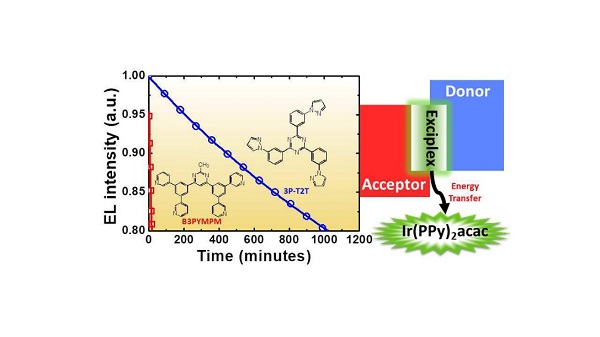Date:2017-12-28 |
Views:2135 |
【Academic writing Sharing 20171228】 |
Exciplex-forming co-host for high efficiency and high stability phosphorescent organic light-emitting diodes
Article excerpt is from:Chun-Jen Shih, Chih-Chien Lee, Ying-Hao Chen, Sajal Biring, Gautham Kumar, Tzu-Hung Yeh, Somaditya Sen, Shun-Wei Liu, and Ken-Tsung Wong
Appl. Mater. Interfaces, 2017, in press
An exciplex forming co-host system is employed to achieve highly efficient organic light-emitting diode (OLED) with good electroluminescent lifetime. The exciplex is formed at the interfacial contact of a conventional star-shaped carbazole hole-transporting material, TCTA and 3P-T2T. The excellent combination of TCTA and 3P-T2T is applied as co-host of a common green phosphorescent emitter with almost zero energy loss. When Ir(ppy)2(acac) dispersed in such exciplex co-host system, OLED device with maximum external quantum efficiency of 29.6%, the ultrahigh power efficiency of 147.3 lm/W, and current efficiency of 107 cd/A were successfully achieved. More importantly, the OLED device showed low-efficiency roll-off and operational lifetime (τ80) of ~1020 minutes with the initial brightness of 2000 cd/m2, which is 56 times longer than the reference device. The significant difference of device stability was attributed to the degradation of exciplex system for energy transfer process, which was investigated by photoluminescence aging measurement at room temperature and 100 K, respectively.
.jpg)


